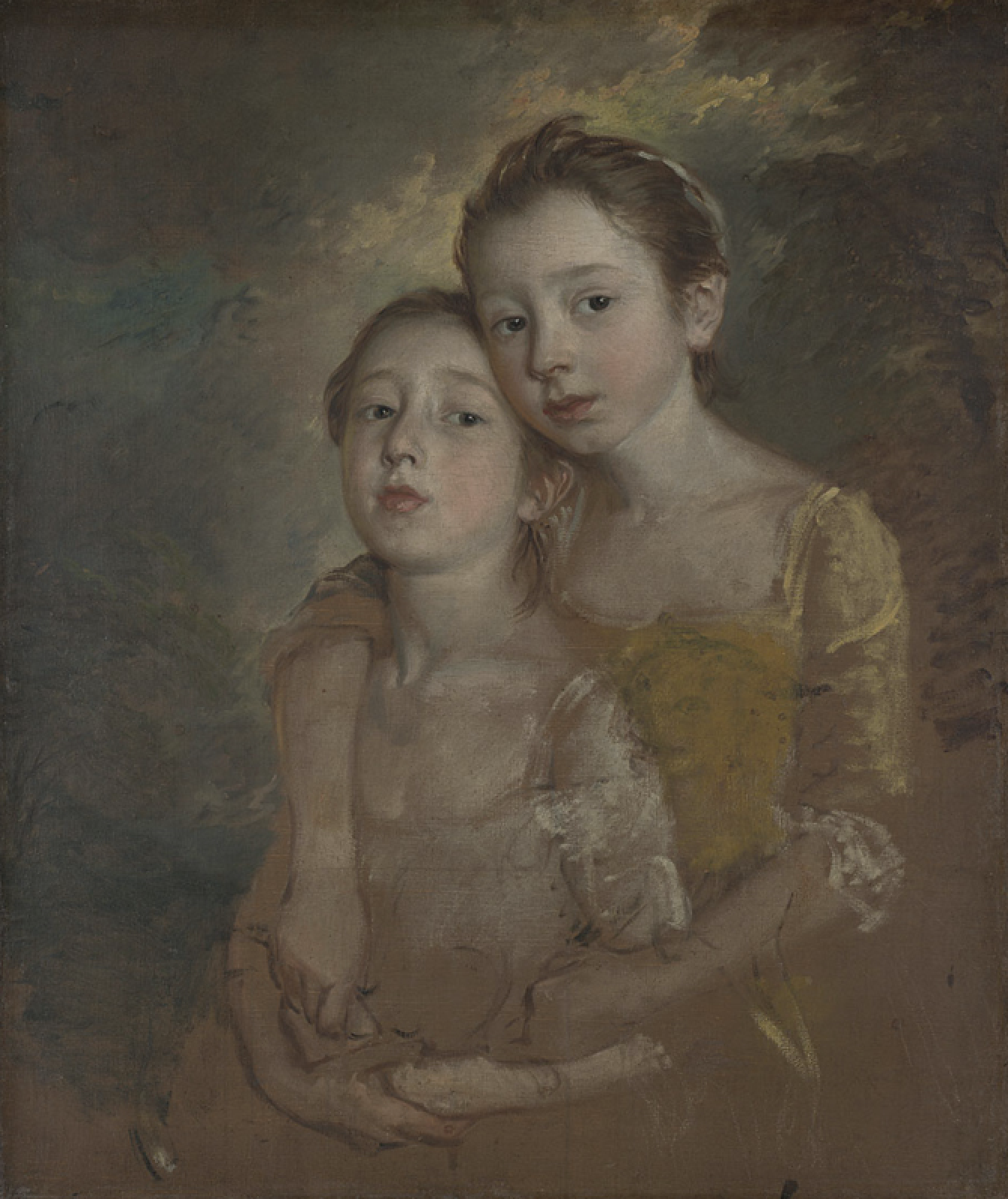Gainsborough’s Daughters: Even Hard Nosed Business People Can Have Soft Centres
Thomas Gainsborough - The Painter's Daughters with a Cat. Circa 1760-1. Courtesy of The Nation Gallery
I confess I’ve not been the greatest fan of Thomas Gainsborough. All those flattering portraits of lords, ladies and the landed gentry; of stout colonels, fashionable celebrities and bewigged countesses. All those haughty looks, formidable stares, self-satisfied glances. Gainsborough was clearly a gifted artist. With his fast, light-handed brushstrokes, he elegantly captured the confident swagger of eighteenth century English society. But to me his pictures displayed little warmth or psychological insight.
I may have misjudged him.
I recently attended an exhibition of Gainsborough’s family portraits. (‘Gainsborough’s Family Album’, the National Portrait Gallery, London, until 3 February.)
Gainsborough was the first British artist regularly to paint himself and his family members. Although he claimed to prefer landscape painting to the portraiture that made his name and paid his keep, these intimate works were a labour of love. Many were unfinished. Perhaps he liked to tinker away at them in his spare time. Perhaps he just preferred them that way.
With her rosy cheeks and black mantilla, Gainsborough’s wife Margaret looks somewhat long-suffering and resigned. In her white lace bow and bonnet, older sister Sarah, a milliner, suggests intelligence and determination. Artist nephew Gainsborough Dupont appears in a blue silk jacket, all handsome and romantic. Clerical brother Humphrey seems sincere and devout. Older brother John, unshaven with unruly hair, comes across as something of a rogue. Nicknamed ‘Scheming Jack’, John was endlessly pursuing ill-fated money-making projects. The picture is inscribed ‘Gainsborow’.
Thomas Gainsborough -The Painter's Daughters chasing a Butterfly. Circa 1756. Courtesy of The Nation Gallery
Gainsborough portrays his family as ordinary middle-class folk with characterful faces and stories to tell; interesting people in everyday attire, with varied preoccupations and concerns.
I was particularly struck by a sequence of paintings, created over many years, of Gainsborough’s two daughters. Margaret, aged 5, reaches for a butterfly, and 6-year-old Mary grasps her hand to protect her from an unseen thistle bush. A few years later Mary puts a comforting arm around her sister’s shoulder as she cradles a cat. Then Mary adjusts Margaret’s hair as she stares out at us, slightly annoyed perhaps. The two teenage sisters earnestly contemplate their art studies. The two society ladies in their twenties rejoice in their silk finery, attended by a faithful hound.
Seen through the paintings he made of his daughters, Gainsborough comes across, not as a sycophantic lover of celebrity elites, but rather as a protective, thoughtful and affectionate father. He wants the best for his girls. He believes in them.
I found myself rather liking this Gainsborough.
In the world of business we are sometimes quick to dismiss colleagues, competitors and clients as villains and fools. We leap to assumptions, jump to conclusions. We readily characterize people as simple-minded, selfish and soulless.
But we may simply have approached from the wrong angle, got off on the wrong foot. Often hard-nosed commercial people have soft centres; sometimes cool, calculating exteriors conceal tender, warm-hearted interior lives.
You just need to ask the right questions.
As so often in life, things didn’t quite turn out for Gainsborough’s daughters as he or they had hoped. The young women didn’t pursue an artistic career. Aged 30 Mary married a musician, but it didn’t work out and she returned home two years later. Her mental health deteriorated, and Margaret, who never married, took care of her in seclusion in Acton. When Margaret passed away, Mary was committed to an asylum where she stayed for the rest of her life.
Thomas Gainsborough himself died from cancer in 1788 at the age of 61. In his last letter he wrote, somewhat wistfully:
‘’Tis odd how all the childish passions hang about one in sickness. I am so childish that I could make a kite, catch gold finches, or build little ships.'
No. 214


